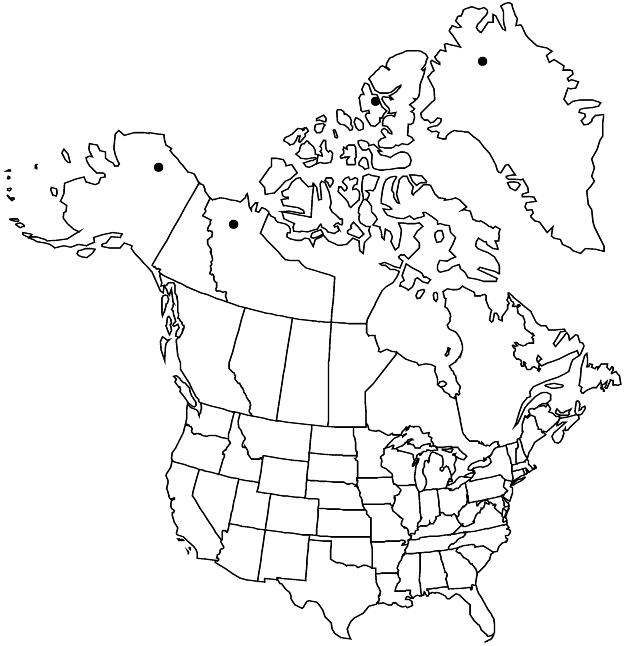Cerastium bialynickii
Trudy Bot. Muz. 21: 81, fig. 1. 1927.
Plants perennial, compact, pulvinate, taprooted. Stems ascending, much-branched at base, 2–10 cm, densely hispid-pubescent, hairs patent, fuscous, multicellular; internodes short; small axillary tufts of leaves absent. Leaves dense below the inflorescence; blade broadly lanceolate, elliptic-lanceolate to ovate or obovate, 5–10 × 1.5–4 mm, thick and ± fleshy, apex broadly acute to obtuse, hispid, hairs fuscous, multicellular, long; proximal leaves marcescent, sometimes subglabrous. Inflorescences often 1-flowered and compact, sometimes 2–3-flowered cymes, hairs patent, dense, fuscous, eglandular and glandular; bracts lanceolate, with or without narrow, scarious margins, densely pubescent, often glandular. Pedicels straight or ± angled at base and/or apex, 5–12 mm, 1–2 times as long as sepals, densely pubescent with long, eglandular and short, glandular hairs. Flowers: sepals usually purplish, 5–6(–7) mm, herbaceous center narrowly lanceolate, margins broad, making apex obtuse, densely pubescent, hairs long, stiff, glandular and eglandular; petals oblanceolate, 7–9 mm, 1–1.5 times as long as sepals, apex 2-fid; stamens 10; styles 5. Capsules cylindric, slightly curved, 9–12 mm, 1.5–2 times as long as sepals; teeth 10, erect, margins convolute. Seeds brown, 0.8–1 mm, tuberculate; testa not inflated, tightly enclosing seed. 2n = 108.
Phenology: Flowering summer.
Habitat: Tundra, rocky exposures, screes, nunataks in the high arctic
Elevation: 0-1300 m
Distribution

Greenland, N.W.T., Nunavut, Alaska, Eurasia (Russian Far East, arctic Siberia and associated islands, Spitzbergen).
Discussion
Cerastium bialynickii previously was included in C. arcticum but is very different from that species, being a small, compact plant with a dense, hispid, fuscous pubescence, a small calyx with the broad, scarious margins making it obtuse, and small flowers, capsules, and seeds. Cerastium bialynickii resembles small compact plants of C. beeringianum but it differs in calyx shape and chromosome number.
Selected References
None.